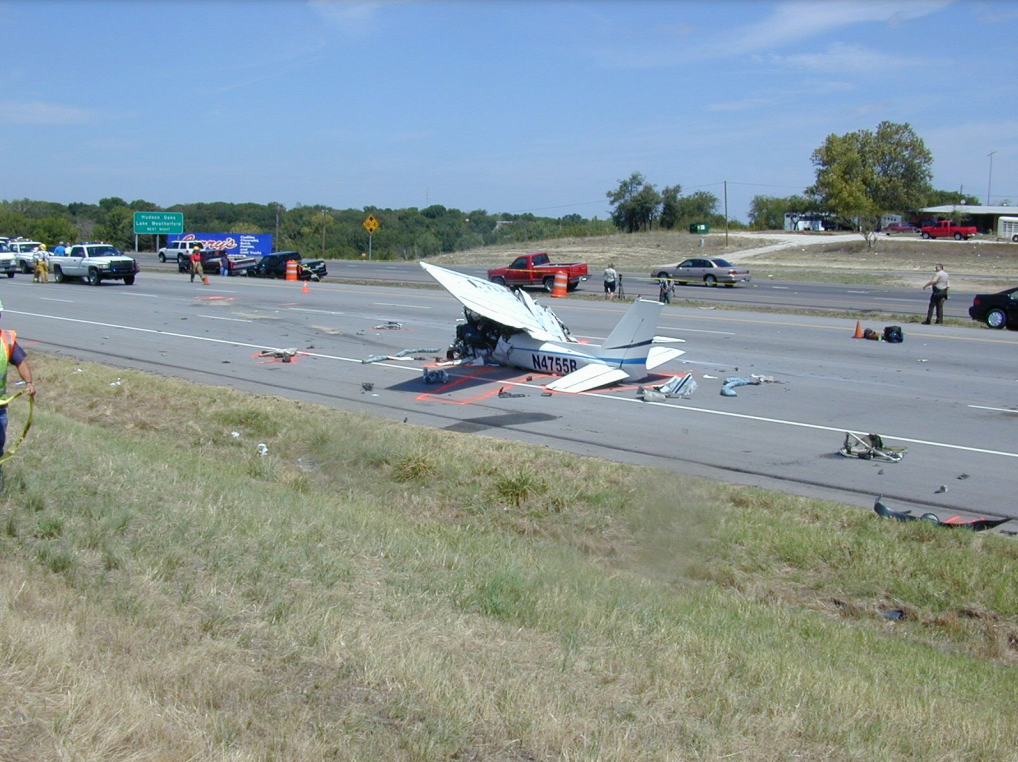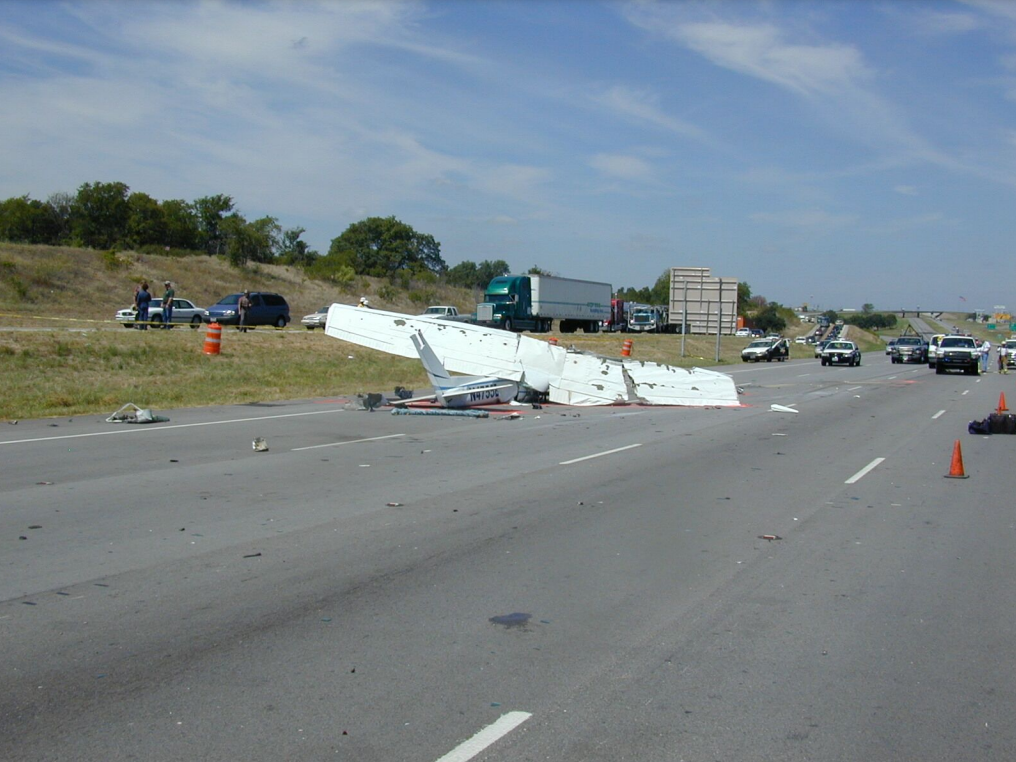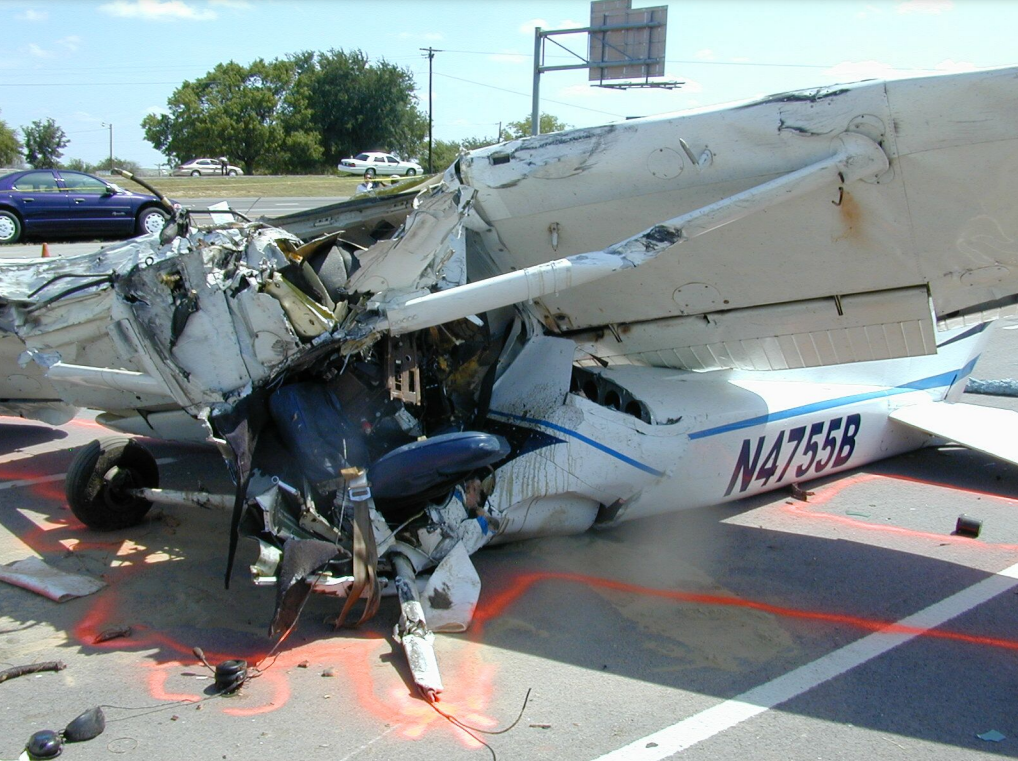
ASN Wikibase Occurrence # 45762
This information is added by users of ASN. Neither ASN nor the Flight Safety Foundation are responsible for the completeness or correctness of this information.
If you feel this information is incomplete or incorrect, you can submit corrected information.
| Date: | Wednesday 22 August 2001 |
| Time: | 09:10 |
| Type: |  Cessna 152 |
| Owner/operator: | Aer Mistral Inc |
| Registration: | N4755B |
| MSN: | 15283618 |
| Year of manufacture: | 1979 |
| Total airframe hrs: | 11633 hours |
| Engine model: | Lycoming O-235-L2C |
| Fatalities: | Fatalities: 1 / Occupants: 1 |
| Aircraft damage: | Destroyed |
| Category: | Accident |
| Location: | Parker County Airport (WEA), Weatherford, TX -
 United States of America United States of America
|
| Phase: | Landing |
| Nature: | Training |
| Departure airport: | Kickapoo Downtown Airpark, TX (T47) |
| Fort Worth Meacham International Airport,TX (FTW/KFTW) | |
| Investigating agency: | NTSB |
| Confidence Rating: |
On August 22, 2001, approximately 0910 central daylight time, a Cessna 152 airplane, N4755B, overran runway 35 during the landing roll at the Parker County Airport (WEA), near Weatherford, Texas, and impacted a tractor/trailer vehicle on Interstate 20. The airplane was owned by a private individual and operated by Aer Mistral, Inc., of Fort Worth, Texas, under 14 Code of Federal Regulations (CFR) Part 91. The student pilot, sole occupant, received fatal injuries, the airplane was destroyed, and the vehicle sustained substantial damage. Visual meteorological conditions prevailed for the planned cross-country flight, and a flight plan was not filed. The solo instructional flight departed the Fort Worth Meacham International Airport (FTW), Fort Worth, approximately 0652, for the planned round robin flight to the Kickapoo Downtown Airpark (T47), Wichita Falls, Texas.
During his second solo cross-country instructional flight, the student pilot reported to the controller that he was lost and low on fuel. The student told the controller that the left fuel gage indicated FULL and the right fuel gage indicated EMPTY. The controller issued the student suggested headings to the nearest airport. The student pilot located the airport and entered the traffic pattern for a landing on runway 17. During the landing roll to the south, the airplane bounced, exited the runway into the grass, and the student performed a go-around. Subsequently, the student landed the airplane to the north on runway 35. Witnesses reported the airplane remained on the runway with the elevators up, flaps retracted, and the propeller turning, before it rolled off the end of the runway at an "estimated speed of 30 mph." Witnesses never saw or heard any indication of braking, nor the addition of power. The airplane struck a vehicle traveling east at 60 mph on an interstate highway located north of the airport. Winds at the time of the accident were from the south at 20 knots. The accident flight time was 2.3 hours. Examination of the airplane's fuel system and its maintenance records revealed that the original left fuel tank transmitter (manufactured by Stewart Warner) was replaced in October 1999 with a new transmitter (manufactured by Rochester). Research revealed that by 1991, the Stewart Warner transmitters and fuel gages were no longer procurable for the airplane, and the Rochester transmitters and gages were to be installed by Service Bulletin (SB)/Service Kit (SK). According to the SB/SK, installation of a Rochester transmitter also requires installation of a Rochester gage. Neither the SB nor the SK had been complied with on the accident airplane. The Rochester gage assembly requires an aluminum back plate. Both fuel gages found in the airplane were Stewart Warner and the back plate was steel. According to the manufacturer representative, "with the Rochester transmitter installed with the Stewart Warner fuel gage, the gage indication would increase as the fuel level in the tank got lower." Physical evidence of fuel leakage from the left tank was found at the tank, the tank fitting, and the inboard wing where the tank was installed. No evidence was found of an in-flight mechanical and or flight/control malfunction that would have rendered the airplane uncontrollable prior to the impact.
Probable Cause: The student pilot's improper decision making in that he landed with a tailwind and failed to execute a go-around, which resulted in a runway overrun. Contributing factors were the inaccurate reading of the left fuel gage as a result of improper maintenance by the operator/maintenance personnel, and the tailwind condition.
Accident investigation:
 |
|
Sources:
NTSB: https://www.ntsb.gov/_layouts/ntsb.aviation/brief.aspx?ev_id=20010829X01807&key=1
History of this aircraft
Other occurrences involving this aircraft
| 1 December 1998 | N4755B | Private | 0 | Fort Worth, TX |  |
sub |
Location
Images:





Photos: NTSB
Revision history:
| Date/time | Contributor | Updates |
|---|---|---|
| 28-Oct-2008 00:45 | ASN archive | Added |
| 21-Dec-2016 19:24 | ASN Update Bot | Updated [Time, Damage, Category, Investigating agency] |
| 10-Dec-2017 12:22 | ASN Update Bot | Updated [Operator, Source, Narrative] |
Corrections or additions? ... Edit this accident description
The Aviation Safety Network is an exclusive service provided by:


 ©2024 Flight Safety Foundation
©2024 Flight Safety Foundation